Making Churchkhela
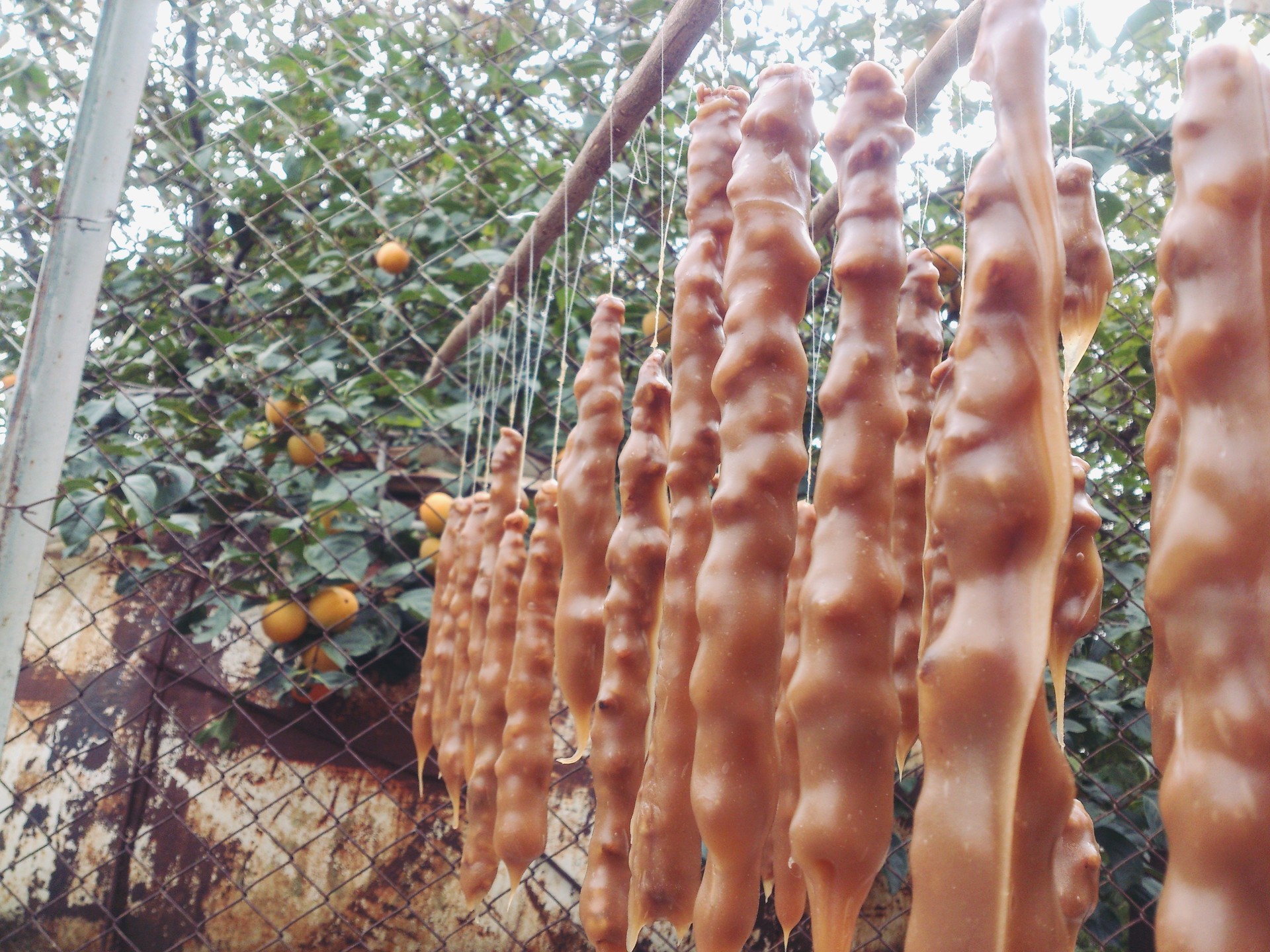
The introduction
Hello people, I hope that you are all doing just fine, I want to tell you about Churchkhela and how it is made and everything, because now is the greatest time for that, I guess.
It's already winter and today, when I woke up it was so cold, that I couldn't shake that coldness and I needed some hot tea to get warm. It's already minus degrees outside and it was like snowing outside, however, it was not cloudy at all, what's more, in fact, it was all sunny and stuff, however, there were some frozen snowflakes coming from somewhere I couldn't understand and it was all windy and stuff and the wind was so freezing that my nose almost froze to death until I got to the bus stop and then to the metro station. Well, I had to go, otherwise the lecturer would get me a minus point and it would affect my total points, besides, it was not like I was ill or something or that I wasn't able to go to the lecture, so that I went. To be honest, I got lucky, because I knew that I had already missed one bus and there are only two of them coming to my street, so that I should have taken the minibus, and wheb I went out, I just saw that minibus and I was very happy, that I could take it, however, it was all filled and it didn't stop when I waved and this was just so disappointing, that I almost went back home. However, I continued my way to the next bus stop, where the second bus comes usually and I thought, that I had missed it, too, and it comes in every 25 minutes or something like that, however, when I crossed the road, I saw it coming and so that I got on that bus and went to the metro station that way. It was really freezing, however, it was a great thing to get somewhere nearby the metro station by bus and not by foot, because in that case I would have been frozen very badly, I guess.
Anyways, Churchkhela is kind of associated with winter and snow and stuff like that for me after autumn and grapes. Well, you know, the Rtveli and picking grapes in vineyards take place in the beginning of autumn and then they make Badagi _ that is grape juice for Tatara and it's really sweet and some people just drink it that way. And then, they make Churchkhelas and they are usually eaten in winter, I mean, there are lot of holidays in winter and stuff like that and people would save Churchkhelas for those days back in those days. Nowadays, it's not quite like that, I mean, they usually have Churchkhelas whenever they want and that way children are happier, because they have access to churchkhelas anytime they want. And back in those days, grandparents or, mostly, grandmothers used to prepare churchkhelas and store them someplace safe from children, so that they wouldn't find them and eat them until they decided that it was time to take some churchkhelas out and give one to each of the kids. That thing made kids want to track those Churchkhelas and look for them in the whole house and find them and eat them in secret, if you want to know the truth. So that, grandmothers thought, they had all the Churchkhelas in the world, when, in fact, they just thought that they had them and actually, the children have eaten most of them by winter. Still, most of the Churchkhelas and sweet stuff are associated with winter holidays, when people are at home and they sit by the fireplaces and drink hot milk and have some conversation with each other. And it's snowing outside and there are snowflakes falling from the sky. That seem just great, you know. However, there is not something like that nowadays, if you ask me.
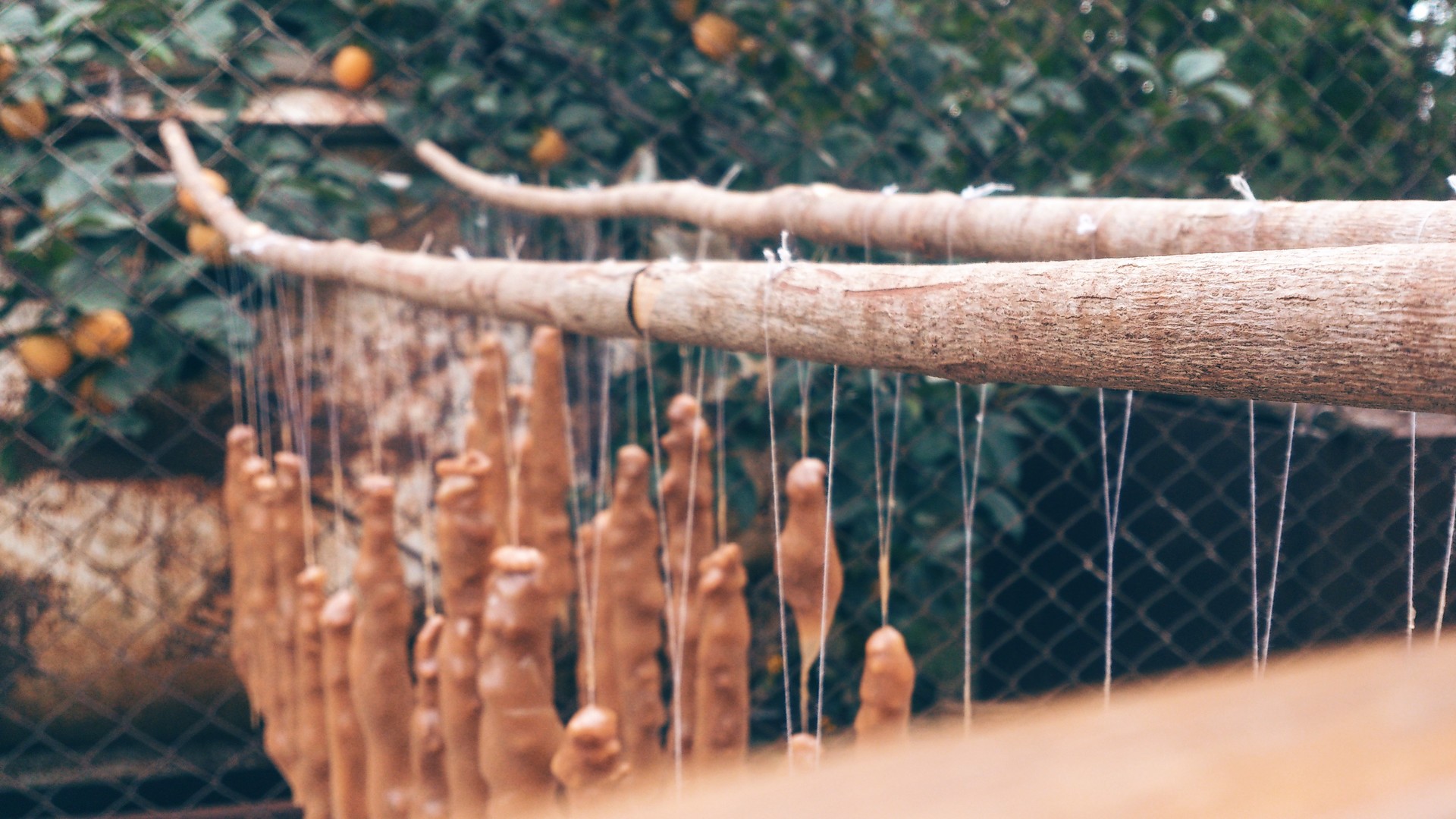
Anyways, Churchkhelas are very good and delicious and the more you eat the more you want to eat. They have walnuts or nuts in them and they have Tatara around those nuts or walnuts. They are pretty nourishing, too, if you want to know the truth. It really depends on the consistency and thickness of Tatara mostly. Some people like it when it's not that thick and when the main ingredients in Churchkhela are walnuts or nuts. And some like it with thick Tatara around. You know, children mostly like Tatara and they eat churchkhelas that way so that they just eat that Tatara stuff, I mean, the outside part of churchkhelas and not those walnuts or nuts. So, you should consider that and not be surprised by that when you give Churchkhela to some little kid and he or she eats it just on the outside, I mean, the outer parts of Churchkhela. I really hate that, but you can't really do anything, because it is a child and he just simply won't eat this Churchkhela anymore if you make him eat the whole thing or something like that. That's how my cousin did when they told hime not to eat Churchkhela like that and so that he didn't eat it at all.

The preparation process
So, now about that Churchkhela and how it's prepared. Well, it's a Georgian traditional thing and everyone knows how to prepare it in Kakheti, however, I'm not really sure about that in other parts of Georgia, because the grapes are grown mainly in Kakheti and they have vineyards and stuff like that and they usually pick grapes and have juice made for Tatara and then they prepare Churchkhelas in the late autumn or something like that. And, you should also know, that there are walnut trees in many places in Kakheti and some people have them in their yards and some of them are just in the streets and things like that and people pick those walnuts and have them stored for the further use and, you know, you can use the walnuts in many things and especially they are used to prepare Churchkhelas in Kakheti, if you want to know the truth. However, I haven't seen so many walnut trees in the western Georgia and maybe that's why it's not that popular to prepare Churchkhelas with walnuts in western Georgia. Well, rather than that, they have nuts in western Georgia and they have lots of them, so that they use nuts in many things, including Churchkhelas, I mean, they have Churchkhelas with nuts and while I'm not really fond of those Churchkhelas, many people really love them for their nutty taste, I guess. They are also thinner, than the walnut stuffed Churchkhelas and not so nourishing, too, because that Tatara thing, or as they call in in western Georgia _ Pelamushi is prepared kind of differently, too, they prepare it with corn flour, so that it's not that thick as the Eastern Georgian one, which is usually prepared with all-purpose flour. I think, Tatara tastes better, though I haven't tasted Pelamushi made from corn flour and I can't really tell you about the difference between the tastes and which one is better and which one is not. It's just my thought, that Tatara is perhaps somehow better.
Anyways, the preperation process for Churchkhela starts in the autumn, when the grapes are picked and their juice is stored. After some time they take that juice, so that they will prepare it for Badagi. You know, thi Badagi should be concentrated enough so that it can be kind of thick juice, but not very thick. It's like, when the whole large saucepan of grape juice is being boiled for Badagi, it needs to be boiled for auch a long time, that the amount of that juice is divided into the third, I guess and that's how much juice ypu are left with after all that boiling process. That's pretty sad, if you want to know the truth, because, of course everyone wants to have much Badagi for Churchkhelas or Tatara or whatever, so that people usually tend not to boil the juice for a long time, however, if you want to have a really good Tatara, you should boil it until that amount of Badagi is left. Well, sometimes it needs to be added some sugar, because of the sour taste of the grapes, however, usually you won't need to do that, because when the grapes are ripen and sweet, that's when they are picked and that's when the Rtveli takes place.
So, now that we have Badagi, we can have that juice poured into glass cans and close them and sterilize them and store them in the cellar or someplace safe with low temperature and stuff like that. My grandmother usually stores them in our cellar. And the glasses are 3 litres in volume, mostly and that's how Badagi is stored in our house. You know, you can open them whenever you want and drink the juice, because well, it's juice and nothing else and my grandmother usually does that, I mean, she likes drinking that juice, and what's more, the juice is neither too sweet, nor too sour, so that it's kind of just perfect, if you want to know the truth.
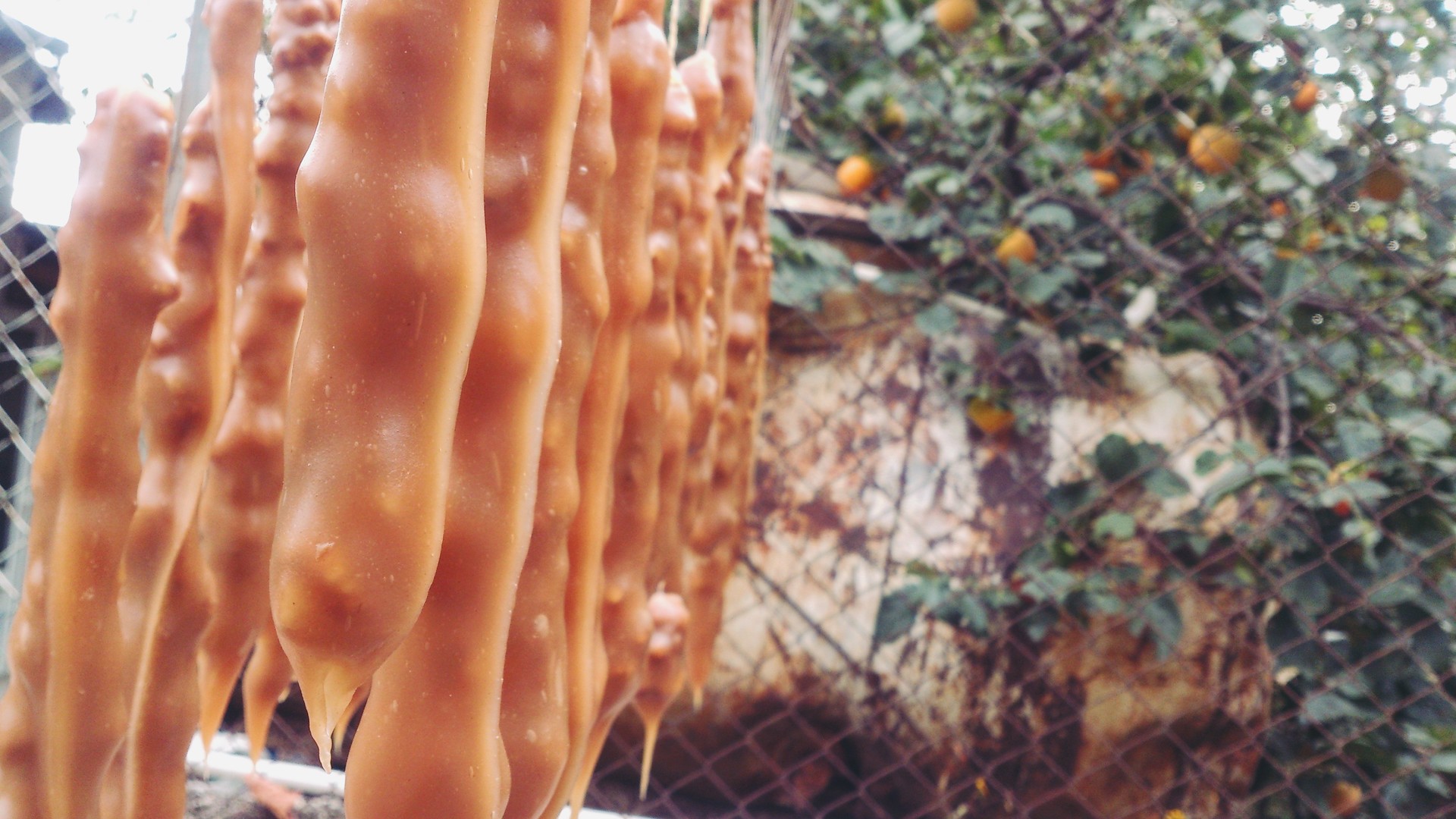
Threading Churchkhelas
So, then comes the next part of preparing Churchkhelas, which includes walnuts and threading them. But first, you should take those walnuts and have them well-dried, because if they are not dry enough, those Churchkhelas won't last long and they will get bitter. So that it's really important to remember that and dry those walnuts pretty well. After that, it's safe to thread walnuts for Churchkhelas. You know, some people like large and thick Churchkhelas and they thread the halves of the walnuts, so that those Churchkhelas become really thick when you put the into Tatara and take them out. And if Tatara is thick too, they get really thick, if you want to know the truth. Well, that's all up to you, however, I wouldn't recommend that, because they are really nourishing and for me, it's not really possible to eat that whole Churchkhela when it's that kind of thick. I prefer quarters of walnuts to be in my Churchkhelas, because that way they are just normal and one can eat them normally, if you ask me. And if you are preparing Churchkhelas with nuts, you should thread the whole nuts, because they are pretty small for their size and if you thread the halves of them, then those Churchkhelas will be too thin and stuff like that, so that they usually have the whole nuts threaded foe Churchkhelas and then they put them into Tatara, or most of all, in Pelamushi and they are usually of different colours depending on the type of grapes' juice the Badagi is made. It's really strange looking at all those Churchkhelas with different colours, they are so beautiful and you will just want to look at them, and, well, they are delicious, too, of course. You know, those colours are because of the grapes and the types of those grapes make the colors of churchkhelas so different. There are white coloured Churchkhelas, too, however, I haven't tasted them. Well, they are usually made in the western Georgia, as I've already told you, so that if you are in the western Georgia and you are going to the seaside and you have to go to Rikoti pass, there you can usually find plenty of Churchkhelas with different nuts and walnuts and colours and everything. and you can have as much of them as you like. They don't cost much, too, however, while they are on the road and stuff like that, they are a little more expensive than in usual places and they might tell you that they cost 3 Laris or something like that, when, in fact, you can buy Churchkhelas like that in 1. 50 or 2 Laris.
Anyways, the threading process is pretty annoying, if you ask me, because your fingertips are getting tired and you have to traumatize them in every second or so and you get these walnuts cracked and you have to pick another ones and so on and so forth and it's really exhausting, however, some people even enjoy that, I guess. You know, when I was little, I always wanted to thread walnuts for Churchkhelas, but they didn't really let me, because, you know, it's not that easy to thread walnuts there and, besides, when you are little, you can easily get injured and have something done wrong or crack all those walnuts or things like that, so that that's why elders don't usually let their children or grandchildren do those kinds of stuff that might get them injured in any way.
You know, it takes much time threading walnuts for Churchkhelas and some people just make hundreds of them. Imagine, threading hundreds of those Churchkhelas and how many times you will have to take one walnut and put it on the needle and thread them! And I’m not exaggerating or something. My aunt just prepared something like 300 Churchkhelas, I guess, and that’s just for this time and she says that she will prepare much more! That’s just insane for me _ threading so many Churchkhelas, but people do that and for them it’s like a habit or I don’t really know what to call it, but, you know, when you are doing something routinely, then you get more experienced in that stuff and it becomes like a habit to you and you just don’t see that thing as something difficult, while for someone it may be difficult and way more difficult!
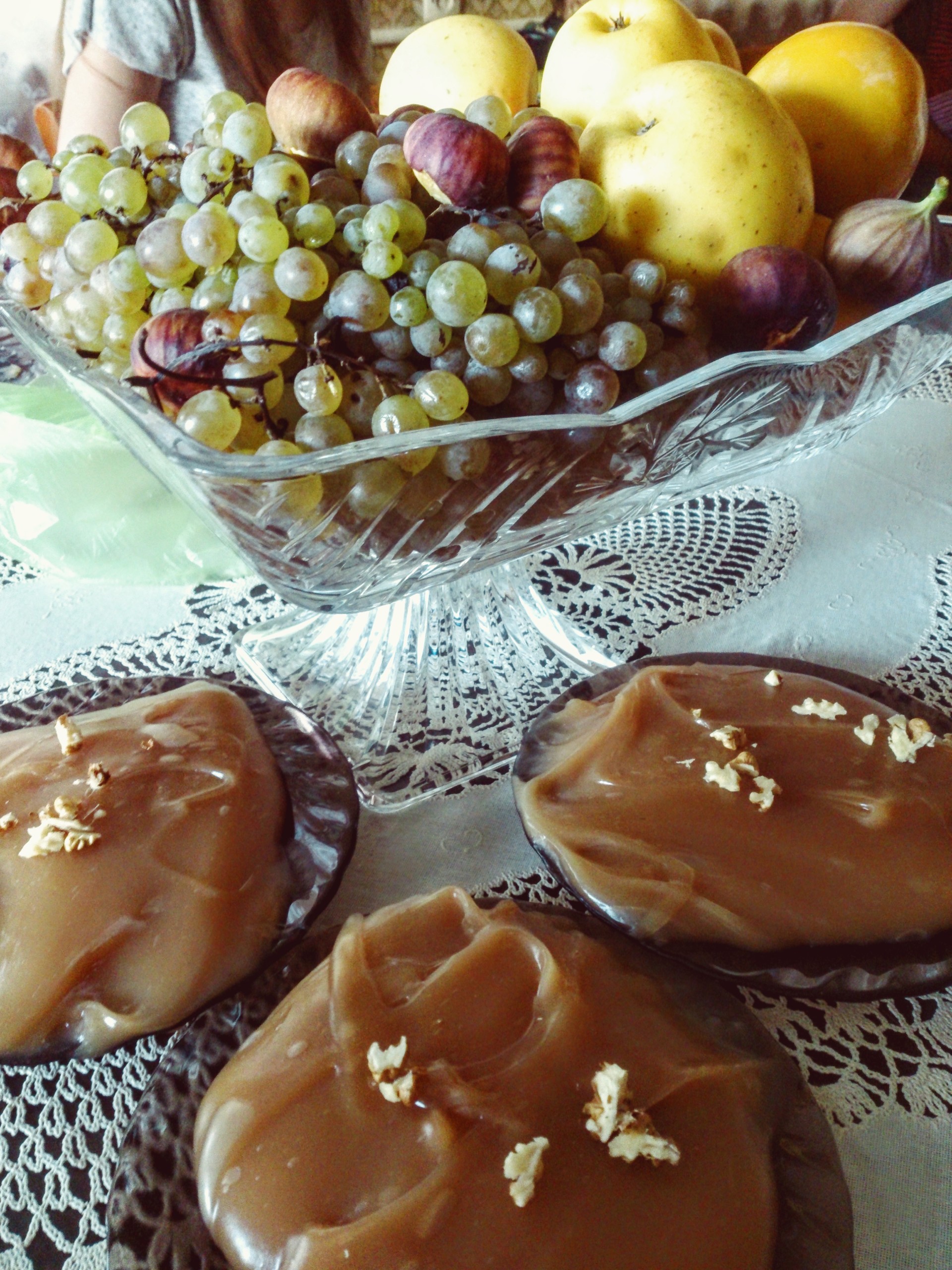
Preparing Tatara
Well, the next thing is to prepare Tatara, which is a pretty tiring process, if you want to know the truth. It’s like preparing something, that needs much attention and carefulness and being always there and stirring and stuff like that and then, when that Tatara gets thicker and thicker, it gets really difficult to stir it, so that your hands get all tired and stuff and you get tired and, well, if you don’t have much strength in your arms, you will just easily get tired and you will need someone to replace you from time to time or something like that, you know. however, there are these people, who just prepare Tatara by themselves and don’t need to get help from anyone. I mean, my great grandmother and her mother and people from those ages used to prepare Tatara all by themselves and they were pretty strong and everything. Nowadays it’s not like that, people are not that strong, I mean, well, they just sit there on chairs the whole day or something like that. Of course, they are working and earning money and stuff like that, and that’s what our ancestors used to do, too, they worked to get food for their children and everything just like nowadays people need money to have food, because they don’t plant anything or have anything to grow or something and then have plot or something like that. So that they need money to go shopping and buy food for their children and themselves, you know. that’s how it is now.
Anyways, I think, if you want to prepare Tatara, you should prepare it in small amounts, I mean, preparing it in huge amounts is just crazy, besides, you get tired and maybe even burn that Tatara or something like that, because when you are preparing plenty of Tatara, it's really difficult to stir all the time and do everything properly.
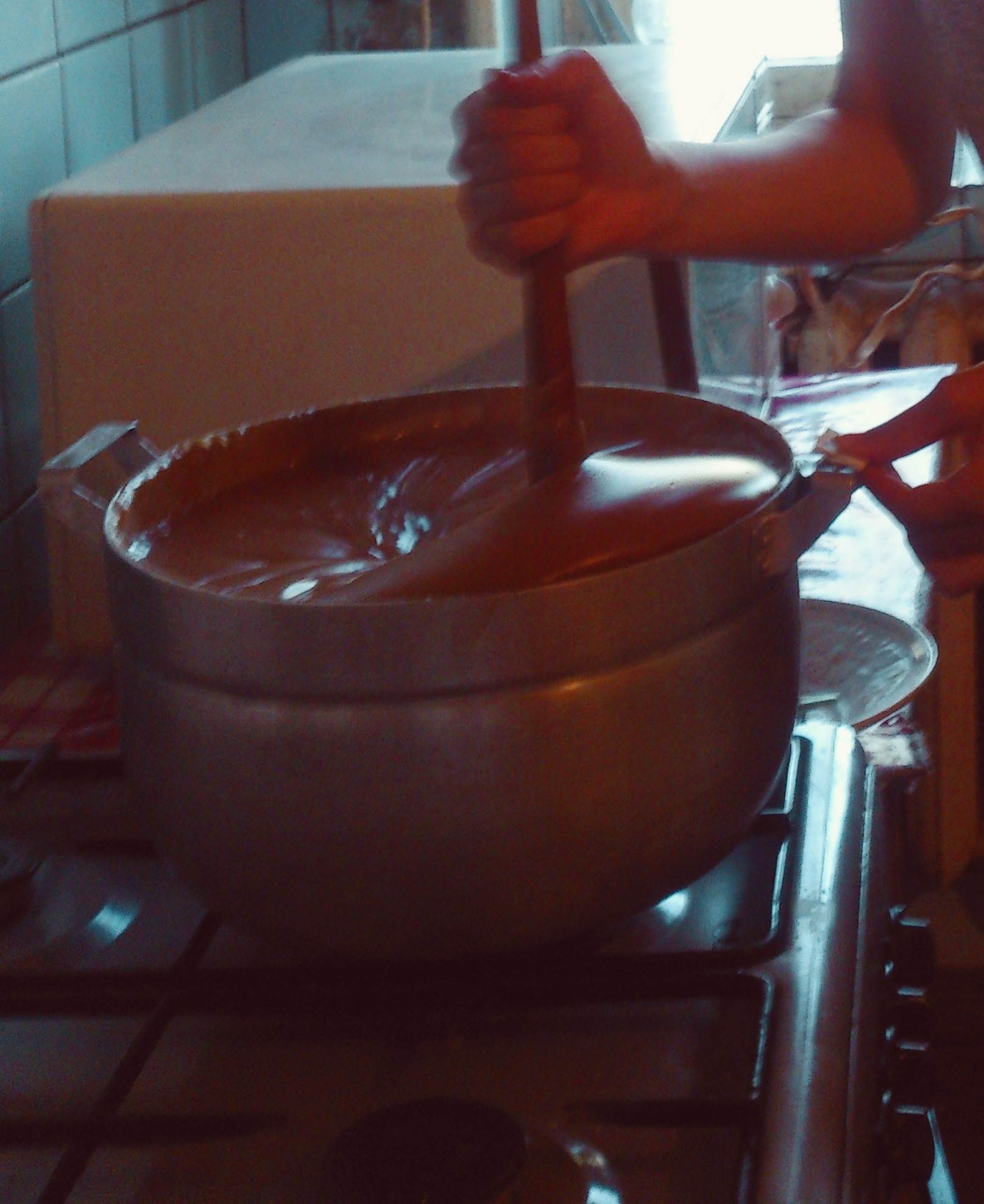
Preparation process shortly
So, I want to tell you about preparing Churchkhelas in a short way, so that, you can just glance at this paragraph and see, how it’s prepared and stuff like that.
Well, first of all, you should have some walnuts and Badagi. Badagi is a juice, prepared from grapes’ juice with boiling it for quite some time.
Then, you should have those walnuts cut into pieces and thread them.
And you should have Tatara prepared from Badagi, which includes adding some flour to Badagi, while stirring it and doing that until it gets thicker.
After that, you can have your Churchkhelas put into this Tatara and covered with it and then taken it out and hung on a wooden stick or somewhere else.
Well, that’s the shortest version of preparing Churchkhelas and if you are interested in many more details, you can just read the whole article about preparing Churchkhelas, of course, however, this will be a small heads up or something like that for that purpose.
I hope, that you will like this short version and want to prepare Churchkhelas by yourself, or, at least, want to buy some Churchkhelas and eat them or taste them, so that you can understand how delicious they are.
Enjoy!
Photo gallery
Content available in other languages
- Español: Preparando churchkhela
Want to have your own Erasmus blog?
If you are experiencing living abroad, you're an avid traveller or want to promote the city where you live... create your own blog and share your adventures!
I want to create my Erasmus blog! →










Comments (0 comments)